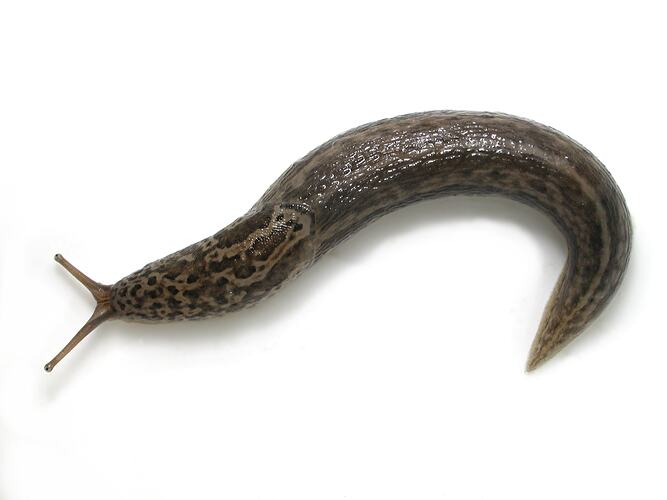General Description
Body pale brown to grey with black spots in lines from head to tail. Head area (mantle) spotted or marbled. Body up to 20 cm long.
Biology
Leopard Slugs are the invertebrate giants of the garden; they are the largest terrestrial slug in Australia. They eat mostly at night, mainly feeding on detritus, preferring decaying vegetable matter to living plant material, though they will eat other slugs and dead animal matter. They secrete a thin, colourless mucus. As all other slugs, Leopard Slugs are hermaphrodites. They cross-fertilise with other individuals. Leopard Slugs "home", establishing a home base for itself, usually in a damp crevice, to which it returns after feeding each night.
Distribution
Europe, North America, South America. Southern and eastern mainland Australia and Tasmania.
Habitat
Damp areas with introduced plants, such as suburban gardens.
More Information
-
Animal Type
-
Animal SubType
-
Brief Id
Brown-grey body, black spots that form lines along from head to tail.
-
Colours
Brown, Grey
-
Maximum Size
20 cm
-
Habitats
-
Diet
Omnivore
-
Endemicity
-
Conservation Statuses
CITES: Not listed, FFG Threatened List: Not listed, EPBC Act 1999: Not listed, IUCN Red List: Least Concern
-
Taxon Name
-
Scientific Author
Linnaeus, 1758
-
Common Name
Leopard Slug
-
Phylum
-
Subphylum
-
Class
-
Subclass
-
Order
-
Suborder
-
Infraorder
-
Superfamily
-
Family
-
Genus
-
Species Name
maximus

